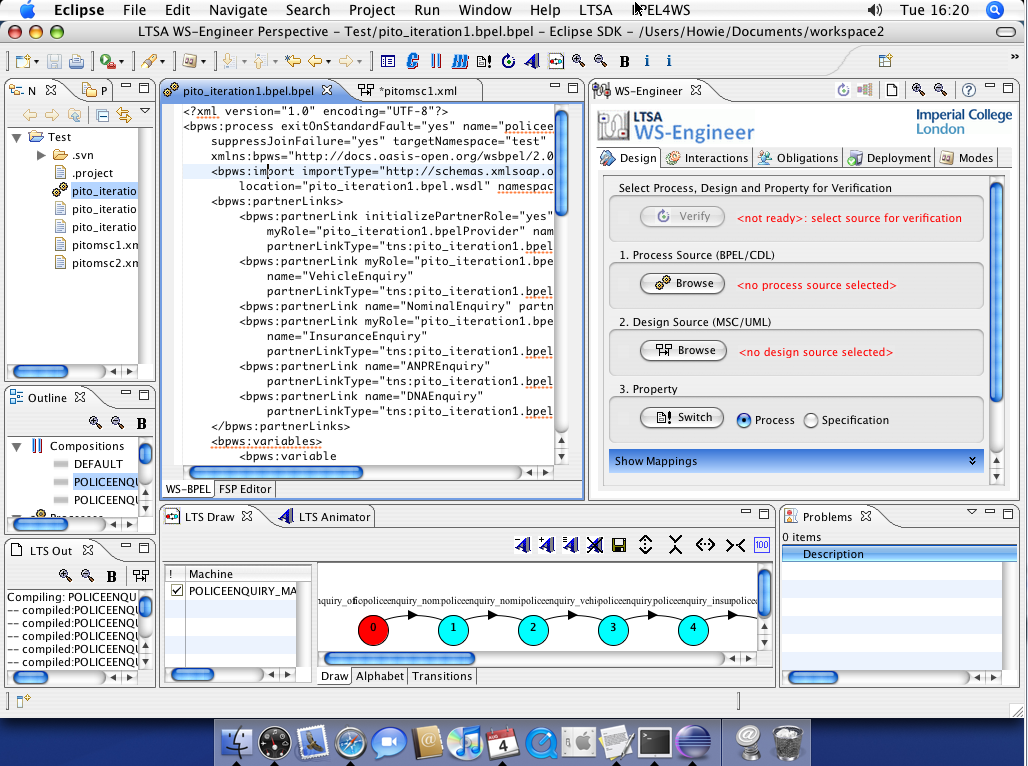The integrated development environment Eclipse is a powerful tool for computer programming. It features the base workshop as well as extensive plugin support, letting you customize the environment to your tastes.
Get to coding!
Sep 21, 2017 Go into the Eclipse.app or STS.app package, move into the “Contents” folder, and edit the Info.plist file (with a text editor of your choice). Scroll down to the list of locales and remove everything from that list except for the “en” entry. Save the file, exit your text editor, and you are good again. Installers for the latest versions of Angular IDE (2020.3.3) and the MyEclipse + CodeMix bundle (2020.3.3) for macOS have been made available today. They are correctly signed for macOS Catalina. They are correctly signed for macOS Catalina. The first item listed is “Eclipse IDE for Java Developers (98 MB).” On the right is a green, downward-pointing arrow. Next to that are links labeled “Mac OS X 32 Bit” and “Mac OS X 64 Bit.” Click on the “Mac OS X 32 Bit” link. (Even if you have nice, new 64-bit Mac, it should run the 32-bit version just fine.).
Work anywhere thanks to Eclipse’s cloud-based feature that shares your projects to the cloud.
Developed in Java with its main focus being Java, you’re able to code in a variety of languages such as Ada, C, C++, COBOL, Fortran, D, JavaScript, Groovy, Erlang, Haskell, Julia, Lau, Lasso, Python, Ruby, and many more languages thanks to the multitude of plugins available. Expanding upon coding uses, you’re also capable of using Eclipse to develop documents for LaTeX, and create packages for Mathematica.
Eclipse is open source and free, which means that you get frequent updates, many versions with unique features to choose from and a wide variety of plugins. This also means you’re fully capable of taking Eclipse’s code and developing an IDE that suits your personal needs, all while coding within Eclipse itself.
Projects created within Eclipse are easy to maintain and keep secure. However, if you are sharing your computer, other users may be able to access your projects.
Eclipse is great if you’re trying to learn a new programming language, especially if you already know one as you won’t need to install a secondary IDE for that language. To find the new plugin you need for the next language you’re learning, simply use Eclipse’s marketplace. The marketplace has thousands of plugins and tools that are ready to be installed.
Where can you run this program?
Eclipse can be installed on Windows computers, Mac Cocoa, and Linux systems. This gives you full cross-platform use thanks to the cloud feature of Eclipse.
Is there a better alternative?
No, there are many IDE programs out there such as WebStorm IDE, but no IDE truly has as many plugins available and supports as many languages as Eclipse.
Our take
Eclipse is a robust development environment with thousands of plugins supported. The vast selection gives you multiple languages to choose from and other handy add-ons.
Should you download it?
Yes, if you’re a developer or if you’re looking to code, then this is a must-have tool. It contains an extensive collection of plugins and supports many programming languages.

Eclipse is an integrated development environment which was first released in November 2001 is used for developing applications. Eclipse is written in Java & default programming language supported by Eclipse is Java but, applications can be developed using other programming languages as well with the help of plugins.
Eclipse SDK (Software Development Kit) is an open-source software and is available for all operating systems including Mac OS X, Windows, Linux, Solaris. The current version of Eclipse is 4.5.2 with code name Mars.2, and next version will be Eclipse 4.6 Neon M6.
One of the best features is its plug-in based architecture, it allows developers to extend the Eclipse platform for various other programming languages like C, C++, Python,PHP, Ruby, R, Erlang (Whatsapp is written in Erlang), Perl etc. Network developers can also use Eclipse platform for developing network-based applications with the use of plug-ins.
Installation of Eclipse on Mac OS X is very simple, the procedure is similar for installing it on Mac OS X El Capitan 10.11, or Mac OS X Yosemite 10.10. See the steps given below to download & install Eclipse on Mac.
Download & Install Eclipse on Mac OS X
Step 1: Go to the official website of Eclipse and download the latest stable version i.e. Eclipse 4.5 Mars. You can also install preview version Eclipse 4.6 Neon, but it may contain bugs, so it’s better to go with the stable version.
Step 2: Double click on the downloaded tar.gz file (eg. eclipse-jee-mars-2-macosx-cocoa-x86_64.tar.gz) to extract “Eclipse.app”.
Step 3: Drag this “Eclipse.app” to the “Applications” folder.
Eclipse Ide For Mac Os Sierra Mac
Step 4: Now, to launch eclipse go to your “Applications” folder and open “Eclipse.app”, you’ll get some warning just ignore.
Let us know if you have any issues installing eclipse on your Mac OS X by your comments below.
Did you like it?
Please Rate it below:
Eclipse Mac Os
